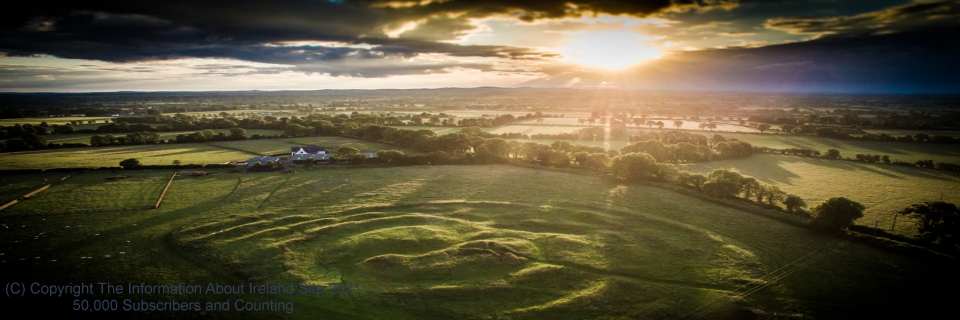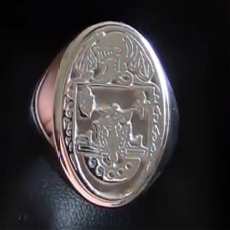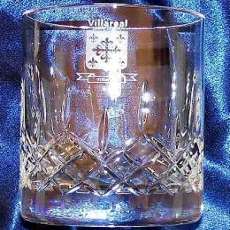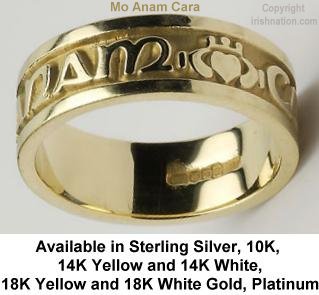-
Genealogy & Names
-
Tourist Information
-
Culture & Reference
CHRISTMAS GIFTS FROM IRELAND - VISIT IrishNation.com Only 358 Days To Go! |
|
Oct 2021 
Hill of Tlachtga Image from Free Photos Of Ireland |


FREE WORLDWIDE DELIVERY FOR A LIMITED TIME find out more |

| Popular Articles from Recent Newsletters: |


|
Despite a very successful Vaccination program in Ireland the number of actual cases of the disease has crept up in recent months and threatens the stability of the Irish healthcare system. 
While the number of Covid cases have increased the same cannot be said about the lethality of the disease. Of course there are still Covid hospitalizations but statistics are revealing that proportionately it is those who are unvaccinated, for whatever reason, who are most likely to end up in hospital with the virus. Irish healthcare officials are again reporting that hospital capacity is nearing breaking point, in what has become an annual event. Of course Covid has exaggerated this problem which begs the question: Why have the hospitals not been reinforced with extra capacity?  There has been fresh unrest in Ulster among Unionists that has been provoked in part by the new aggressive attitude emanating from London regarding the Brexit agreement. The 'protocol' is the sticking point once again, and it is this agreement that allows for special status to be given to the six Counties in the northern part of Ireland, in relation to immigration, trade documentation, and the free passage of goods.
There has been fresh unrest in Ulster among Unionists that has been provoked in part by the new aggressive attitude emanating from London regarding the Brexit agreement. The 'protocol' is the sticking point once again, and it is this agreement that allows for special status to be given to the six Counties in the northern part of Ireland, in relation to immigration, trade documentation, and the free passage of goods.
Despite having signed up the agreement last year the British government, led by Boris Johnson, have only recently decided that they want to renegotiate or scrap it, (it is unclear which is their preference). The worst-case scenario would see a complete breakdown in relations between the UK and the EU which would then put the onus on Ireland (as a member of the EU), to implement a hard border around the six Counties, something that the Dublin Government is very keen to avoid (as it would effectively wreck the Good Friday agreement upon which peace in Ulster is based). |

|
||||

|
note: Tlachtga, pronounced 'clocked-gah' Samhain, pronounced 'sough-inn', rhymes with bough Mug Ruith, prononced 'mog roo-ah' Roth Ramach, pronounced 'rot rom-ock' It is only in recent years that the epic significance of Tlachtga has begun to be fully appreciated. The 'Hill of Ward' which is Tlachtga's Hill, is located next to the town of Athboy in County Meath. It is no coincidence that it is located in Meath as it is this County that is also home to the Hill of Tara, Newgrange, Dowth, Knowth and a variety of other archaeological and cultural wonders. 
Tlachtga's Hill itself is a small Ring-Fort with man-made circular mounds, relatively modest in size, that recent excavations have revealed may have incredible treasures yet to be realized. The site has long been a gathering place for Pagans and Wiccans, and indeed for those whose belief in a sincere connection with the earth defies such labels. For they know its significance. For this small hill in the middle of the Irish countryside is where the worldwide tradition of Halloween began. Originally known as Samhain, Halloween marks the end of Summer and the harvest. It was a time for great celebrations and feasting in the Pagan world, stretching back to the Bronze Age (approx 3500 B.C. to 1200 B.C.) and possibly even before that era. Geoffrey Keating was a seventeenth century chronicler who wrote about Tlachtga in his much referenced book 'History of Ireland': (it was on this hill that) 'the Fire of Tlachtgha was instituted, at which it was their custom to assemble on the eve of Samhain to offer sacrifice to all the gods... it was of obligation under penalty of fine to quench the fires of Ireland on that night, and the men of Ireland were forbidden to kindle fires except from that fire." and 'the priests, augurs and druids of Ireland [would] assemble upon the eve of All Saints, in order to consume the sacrifices that were offered to their pagan gods'. The hill was one of several important sites in the Kingdom of Midhe (now Meath), others being Tara, Teltown and Uisneach. It became known as the Hill of Ward when it was named for a local landowner who owned it at one time. The Cairns of Loughcrew (over 5000 years old), are visible from the hill. The sacred site at Tara is also within view. As the Christian faith spread throughout Ireland from the fifth century onwards, the process of 'Christianizing' Pagan Gods and Goddesses and their legends and traditions really took hold. Thus the tales of the ancient Goddess Brigid became merged and intertwined with the actual Saint Brigid, who died in the sixth century. Similarly the festival of Samhain was Christianized as 'All Hallows Day'. It is on this night that the veil between the dead and the living might be lifted and when demons might wander the land. Samhain was the festival of the dead, and the beginning of the Celtic new year. It was this Celtic occasion that later became known as Halloween. Dr. Steve Davis, from UCD, has carried out research into the origin of the hill: 'There has been a suggestion that one of the reasons the site is not better known is that it was written out of the (Saint) Patrick story - that it was so infamous that the church did a very good job of trying to erase it from the mythology'. Which brings us to Tlachtga. Tlachtag was a Druidess of considerable power and importance, the daughter of Mug Ruith who lived on Valentia Island in Kerry. He could grow to enormous size while his breath could cause tremendous storms, turning men to stone. He is said to have lived during the reign of nineteen kings, with his lifespan stretching back to the time of Christ on earth. Tlachtga and her father could travel the world on the Rath Ramach, a fabulous spinning wheel of fire that could easily transport them. Mug Ruith sought out knowledge and learning like few before him and it was in this manner that he and Tlachtga travelled to study under Simon Magus (Simon the Sorcerer), who is mentioned in the Bible. Simon Magus looms large in the scope of this tale, and the fact that he has an actual crime named for him (Simony: the buying and selling of Church offices and relics), indicates that this tale will not end well. Simon Magus and Mug Ruith continued with their study of magic and sorcery and sent Tlachtga out into the world to gather as much knowledge as she could. Upon her return they realized that her knowledge far surpassed their own! They were outraged and such was their jealousy that they set the three sons of Simon Magus upon Tlachtga, who defiled her. Of course this was an appalling and dreadful moment for Tlachtga. She returned to Ireland where she gave birth to three sons, Dorb (Doirb), Cuma (Cumma) and Muach. It was on the hill in County Meath that Tlachtga brought her three sons into the world, and it was there that she died, unable to sustain her life in the face of the utter grief and despair she felt at the indignity she had endured. From that time she entered the lexicon of the mythology that is so rich in Ireland and in which there has been a revival of interest and understanding. In recent years a renewal of the annual gathering now attracts hundreds of people to the Hill at Halloween. A walk from Athboy up towards the Hill itself culminates with a celebration, with elaborate ceremonies and an acknowledgement of the cultural gift to Ireland and the world that Tlachtga is. Tlachtga, the Irish Druidess that gave the world Halloween! Further Information: Video of Joe Conlon from Athboy Heritage Forum The Annual Puca Festival Tlachtga: Celtic Fire Festival Book by John Gilroy Read more amazing Stories of Irish Legends and Mythology. |


find out more |

|
Douglas Hyde was born in Frenchpark in County Roscommon in 1860. His father was a local Church of Ireland Rector. He quickly became fascinated with the Irish language and entered Trinity College where he studied other languages including French, German, Greek, Latin and Hebrew. He was determined to prevent the continuing decline of the native language however, and in 1893 he founded the Gaelic League. 
The Irish language had been in decline since the seventeenth century but this decline accelerated in the years after the famine. The 'Black Death' of 1845 to 1849 resulted in over a million deaths from starvation and a further million people were lost to emigration in the decade following the famine. The effect of the famine on the Irish language was devastating. The increased awareness in national identity that culminated in the Easter Rising in 1916 and the subsequent War of Independence and eventual declaration of an Irish Republic can be traced to events in the second half of the nineteenth century. The formation of the Gaelic League by Douglas Hyde was crucial in the promotion of the idea of an independent Irish nation. Many of the iconic Irish nationalist leaders that were later to shape the course of Irish history formed their nationalistic philosophies during their membership of the Gaelic League. Pearse, deValera and Collins were all members. Hyde later became discontent with the increasing political bent that the League was displaying and resigned the presidency of the organization he had founded in 1915. He had no political affiliation either with the Home Rule movement or Sinn Fein. He accepted a position in Seanad Eireann (the appointed Senate) but later lost the post when an election was held. It is believed that the fact that he was a Protestant counted against him, although false allegations that he supported divorce must also have damaged his chances. He returned to academic studies and became Professor of Irish at UCD.  Huge Crowds were drawn to the Inauguration of Douglas Hyde Despite having retired some years earlier Eamon deValera appointed Douglas Hyde once more to Seanad Eireann. His stay in the Senate was again short-lived but this time it was because greater office beckoned. deValera and the opposition leader W.T. Cosgrove agreed that Hyde should become the first President of Ireland. Both of these leaders wanted to prove that the 'new' Ireland could be inclusive and the appointment of a Protestant would certainly demonstrate this. Recognition for the years of service Hyde had given to the Irish people through his tenure as president of the Gaelic League was also a factor. In 1938 he became the first President of Ireland and settled into Aras an Uachtarain in the Phoenix Park, which has remained the home of all Irish Presidents ever since. Hyde was a popular President with the US President Roosevelt calling him 'a fine and scholarly old gentleman'. He suffered a massive stroke in 1940 and it appeared his demise was near. He recovered however and, although wheelchair bound, continued his presidential duties for another 5 years. He left office in 1945 but continued to live in the Phoenix Park until his death in 1949. He was granted a state funeral and was buried in his native Roscommon. His contribution to the cause of the Irish language, history, music and literature cannot be overstated with W.B. Yeats proclaiming him as the source of the Irish literary renaissance which continues to this day. |

|
by Philip McCormac note: Cuchulainn, pronounced 'koo-cull-in' Setanta, pronounced 'seh-tanta' When the Hero of Ulster was born he was not called Cuchulainn, but Setanta. Even from his birth he was unusual in strength and dexterity. He was walking unaided after only weeks and within a few months he was sitting at table and eating the same food as were the adults. While still a toddler Setanta was never still but constantly exploring and examining the world around him. 
One day he wandered out into the yard of his home. Like all the folk at that time the farm animals were kept close to their houses to protect them from the depredations of their brothers in the wild as well as rustlers. Hens and pigs and goats wandered freely around the dwelling. Setanta was delighted to find this world of crowing, clucking, bleating and barking animals. However there was one animal that was kept in a separate enclosure and that was the bull. This huge animal was particularly brutal and bad-tempered. It had a ring through its nose so that Setanta's father could hook a long pole into the ring. This enabled him to control the animal's movements. As the nose is very tender the bull usually came meekly for fear of having the ring jerked or pulled too harshly. Even with this form of control the bull could still act unpredictably and had already killed one man and gored another so severely he had to get about on wooden crutches. Usually it took two or three men with these poles hooked in the bull's nose ring to control it. Setanta spotted the great monster in the corral and cooing with delight crawled under the stout wooden posts that kept it fenced in. No one missed Setanta until a neighbour who happened to be passing by saw the boy with the beast. He immediately rushed to the house and raised the alarm. 'It's the boy, Setanta,' he yelled. 'He's in with the bull!' Fearing the worst, Setanta's mother rushed to the bull's enclosure while his father gathered up the hooked poles in the forlorn hope of rescuing his son. To the adults' horror Setanta was astride the bull and kicking his little heels into the animal's flanks to encourage the beast to take him for a ride. To the amazement of all, the great beast was obeying the child's wishes and was lumbering around the enclosure like the most docile of household pets. From that day on when his father wanted the bull moved he sent Setanta to carry out the task. As was the custom at that time, when a boy was of age he was fostered out to his clan lord in order to learn the warrior skills of the Celts. When Setanta was seven years of age he was sent to live with King Conor, a wise and worthy leader. At Conor's court Setana lived with other boys his age and older. They were there to learn the skill of using a spear in combat, the art of protecting oneself with a shield and proficiency in swordplay. From the very beginning Setanta excelled in weapon skills. His javelins went twice as far as the other boys. When he picked up his shield it seemed twice as large as the others for no one could penetrate his guard. As for his sword, he learned to wield it with extraordinary dexterity and skill. In order to develop character and team spirit the boys were encouraged to play games. One of the favourite sports amongst the boys was hurly. This was played with a long handled stick that had a curved end for hitting and controlling the ball. The ball itself was made of hide, roughly the size of a clenched fist. Teams of eleven boys played against each other. One day a famed sword maker named Culann the Smith invited Conor to a feast. Riding on his way to the entertainment, the king saw a group of boys playing hurly. He pulled up in his chariot to watch. 'That's odd,' he observed, 'there seems to be one boy playing against all the rest.' And indeed there was Setanta, running rings around the other boys and scoring time after time. Eventually Setanta's exploits annoyed the boys so much they left off playing the game and attacked the youngster with their hurly sticks. Setana fought back with great ferocity and soon several boys were lying on the pitch felled by the lone fighter. Conor strode onto the pitch and berated the boys for their unsporting behaviour. 'Shame on you for ganging-up on one of your fellows. You are here to learn comradeship and team spirit and there I find you behaving in this cowardly manner.' Having chastised the youngsters he turned to the object of all this animosity. 'Setanta, you will come with me. I am on my way to Culann who is giving a great feast. I want you there with me.' 'But I'm having such a good time here,' Setanta pleaded. 'Can't I come along behind when the game is finished?' Conor smiled and agreed. 'But don't you be late,' he admonished the boy and continued his journey leaving Setanta to finish the match. When Conor arrived at Culann's abode the host asked him if all his men were present. Conor, forgetting Setanta would be following behind, answered in the affirmative. 'Good, then I'll shut the gates and let loose my hound. It is the most savage of beasts and it requires five men with chains to restrain him. With it prowling outside my house I have no fear of enemies attacking me.' So the huge dog was released and the gates were shut while the preparations for the feast went ahead. In the meantime Setanta followed along after his king, carrying his hurly stick and ball and javelin. He was young and full of energy so he played a game as he travelled. He would hit his ball with the hurly high in the air then throw his javelin after it and run swiftly after them and catch both before they fell to the ground. As the boy approached Culann's house the ferocious guard dog scented the newcomer and gave vent to the most blood-curdling howling. Setanta took no notice of the terrible clamour and continued with his game. The men inside the house heard the dog and climbed to the walls to see what was upsetting the hound. King Conor groaned, when he saw Setanta, remembering too late he had invited the boy to join them at the feast. He could do nothing to help as the boy and the dog were too far out. By the time they would get the gates open and rush to his aid it would be too late. The men on the ramparts yelled and banged their shields against the ramparts to distract the dog but it had eyes only for this small boy who was so foolish as to venture near the house it was trained to guard. Snarling ferociously the great beast bounded towards Setana. The men on the ramparts could see that the youngster was doomed and a great cry of despair went up. Conor and his men had witnessed the lad's valour at the hurling match and they regretted the loss of such a gallant young blood. As the dog rushed towards him, Setanta seemed to notice the animal for the first time. The men watching groaned audibly as they saw the boy throw down his hurly and javelin. They assumed the sight of the beast had terrified the boy so much he had dropped his weapon and meekly awaited his fate. They watched in despair as they anticipated the outcome of the encounter expecting the poor boy to be torn limb from limb. As the dog leapt towards him, instead of fleeing or remaining still while the animal attacked, Setanta ran to meet it. To the watching men it seemed the boy slipped and fell beneath the snarling brute. A cry of despair went up and they waited to see the boy ripped to pieces. To their amazement Setanta stood upright with the howling dog held above his head. Ferociously it struggled and slavered and gnashed the air with its razor-sharp fangs. Setanta ran a few steps and flung the hound against a tree. The dog smashed into the tree and toppled to the ground. Setanta crouched at the ready and waited for another attack but the creature, after raising its head and making a pitiable whimper collapsed. It was obvious the dog was either dying or dead. Great was the rejoicing from the ramparts as the men cheered and hammered their swords on their shields. The gates were opened and Conor and his men rushed out to greet Setanta. Triumphantly they carried him on their shoulders shouting with glee and praising his bravery. There was one man who was not too pleased with Setanta's deed and that was Culann. 'What am I to do now that you have killed my guard dog?' he complained. 'When my enemies hear of this I will never be able to have a peaceful night's sleep again. I will have to stand guard myself.' The boy drew himself up before the distraught sword maker. 'I will replace your hound. Until you find another big dog to guard your house I shall patrol in its place.' Conor laughed heartily and his men cheered all the more at the boy's boldness. 'Then you must have a new name,' the king shouted. 'From now on we will call you Cuchulainn, the Hound of Culann.' From then on that was his name - Cuchulainn and sometimes too he was known as the Hound of Ulster. |

View the Archive of Irish Phrases here: https://www.ireland-information.com/irishphrases.htm |

|
The winner was: rclare255@gmail.com who will receive the following: A Single Family Crest Print (usually US$24.99) Send us an email to claim your print, and well done! Remember that all subscribers to this newsletter are automatically entered into the competition every time. I hope that you have enjoyed this issue! 
by Michael Green, Editor, The Information about Ireland Site. https://www.ireland-information.com Contact us (C) Copyright - The Information about Ireland Site, 2021. 17 Páirc Ghrainbhil, Carraig Dubh, Contae Baile átha Cliath, Ireland Tel: 353 1 2893860 |

|
MARVELOUS GIFTS FOR ANY OCCASION FREE DELIVERY TO YOUR DOOR 
BIG REDUCTIONS! Stunning Family Crest Signet and Seal Rings 
DISCOUNTED FOR A LIMITED TIME Elegant Cufflinks 
Incredible Family Crest Plaques Made in Ireland 
Superior Framed Family Crest Parchments 
Gorgeous Glistening Galway Crystal 'Your-Name' Old Irish Sign NEW DESIGNS! 
From US$34.99 - Free Delivery 
New Designs available on our Coffee Mugs 
Personalized Licence Plate 
Personalized First Name Plaque. Great for Kids! 
'Your-Name' Polo & Tee Shirts 
From US$69 Delivered BIG REDUCTIONS! Stunning Engraved Rings from Ireland with Irish Language Phrases. Mo Anam Cara: My Soul Mate Gra Dilseacht Cairdeas: Love, Loyalty, Friendship Gra Go Deo: Love Forever Gra Geal Mo Chroi: Bright Love of my Heart SEE MORE GREAT OFFERS AND DISCOUNTS AT: IRISHNATION.COM FREE DELIVERY FOR A LIMITED TIME! |
